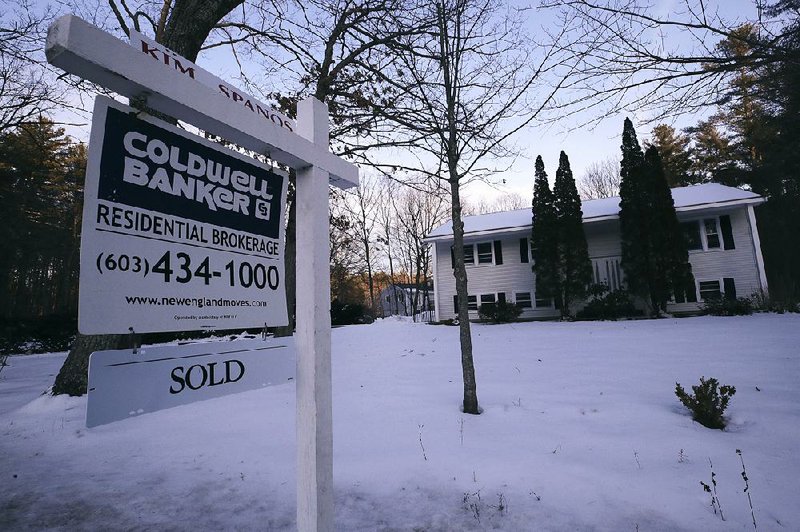WASHINGTON -- U.S. existing-home sales climbed 3.6% in December, but a record-low inventory of houses on the market has caused prices to surge.
The National Association of Realtors said Wednesday that sales of existing homes rose last month to a seasonally adjusted annual rate of 5.54 million. For all of 2019, 5.34 million homes were sold -- matching the 2018 level. High mortgage rates hurt sales in the first half of the last year, while lower rates boosted purchases in the second half.
But the rebound in sales failed to cause more people to put their homes on the market. Sales listings have tumbled 8.5% from a year ago to 1.4 million properties. There is just a three months' supply of single-family houses for sale, the lowest level since the Realtors began tracking the number in 1982. Realtors see anything below five months of supply as a sign of a tight market. Inventories have fallen at all price levels below $1 million for the past year.
"America is facing a dire housing shortage condition," Lawrence Yun, the Realtors association's chief economist, said at a briefing in Washington. "We need to build more."
The median sales price has jumped 7.8% over the past year to $274,500 as inventories declined for a seventh-straight month. Home values have increased at more than double the pace of wage growth, making it harder for would-be buyers to save enough money for a down payment.
In December, sales rose in the Northeast, South and West. But sales fell in the Midwest, which is generally a more affordable market.
First-time buyers made up 31% of sales, down slightly from 32% the previous month.
Existing-home sales account for about 90% of U.S. housing and are calculated when a contract closes. New-home sales, which make up the remainder, are counted when contracts are signed and will be reported Monday.
The unexpectedly robust advance for sales marked a strong finish for a housing sector that began last year struggling to gain its footing. The residential rebound is poised to support economic growth for a second consecutive quarter and cushion the economy from subdued business investment.
Recent data underscores positive momentum in the sector heading into the new year.
Housing starts jumped to a 13-year high in December. Construction of single-family homes rose 11.2% to an annual rate of 1.06 million homes last month while apartment construction fell 9.6%.
Housing construction has been rising since July, helped by falling mortgage rates in the final months of the year and increased demand as the unemployment rate approached a half-century low. Housing starts for the year had their best showing since 2007.
Applications for building permits, considered a good sign of future activity, fell 3.9% in December to an annual rate of 1.42 million, but remained well above the pace of July.
Meanwhile, homebuilder sentiment has posted the best back-to-back readings since 1999 in December and this month as measures of prospective buyers and the sales outlook improved.
Information for this article was contributed by Josh Boak and Martin Crutsinger of The Associated Press and by Reade Pickert, Ana Monteiro and Prashant Gopal of Bloomberg News.
Business on 01/23/2020
